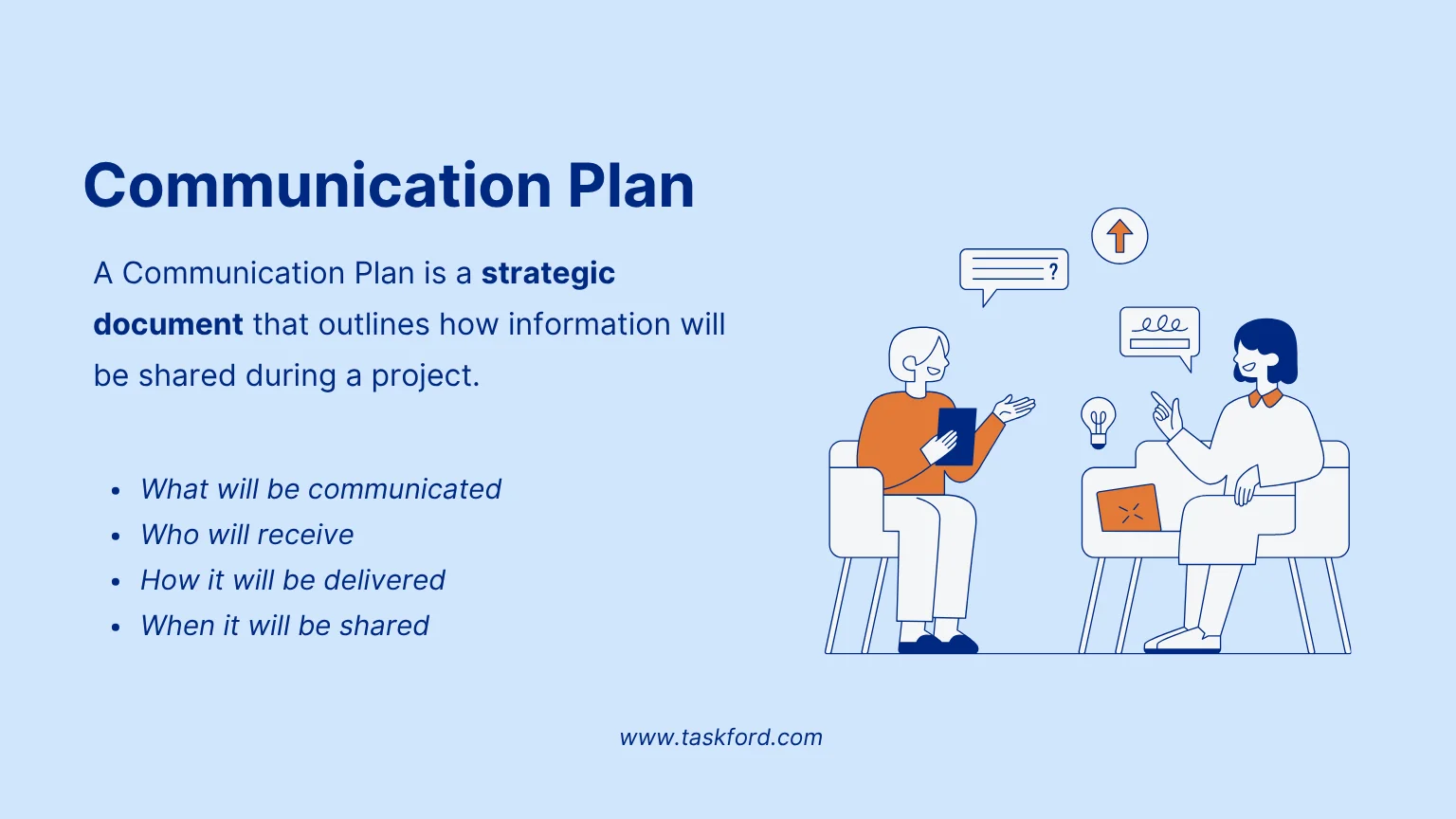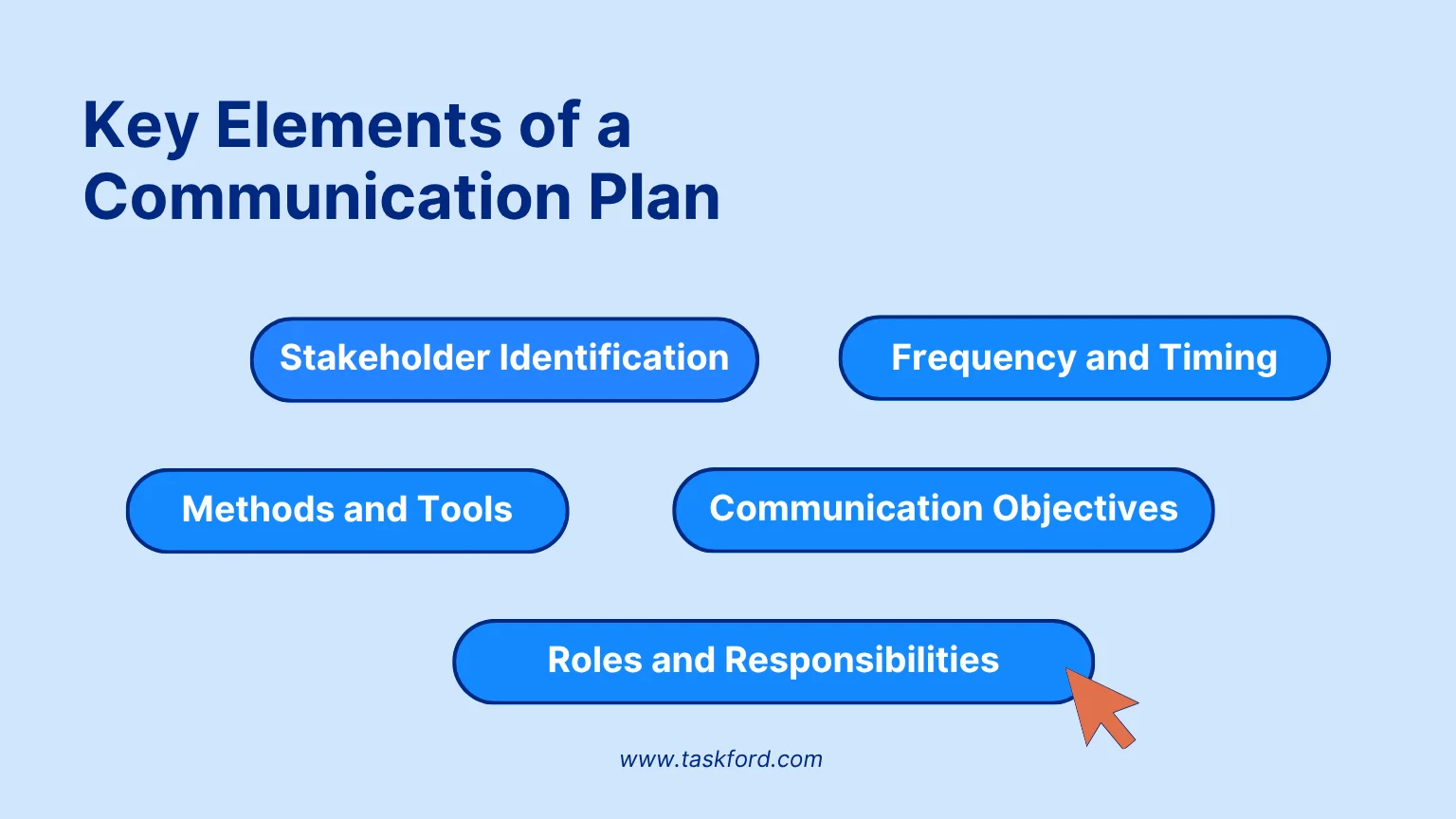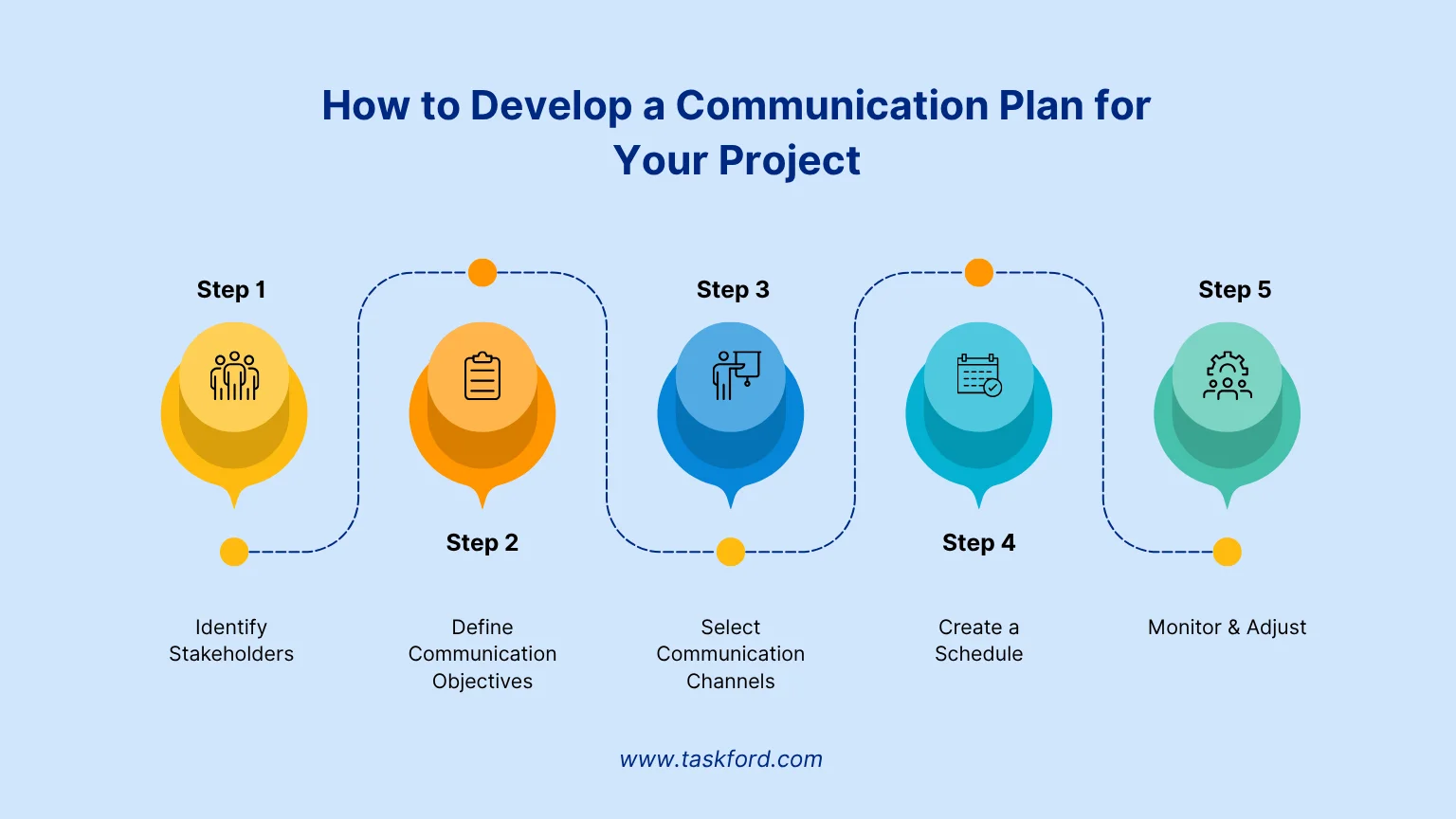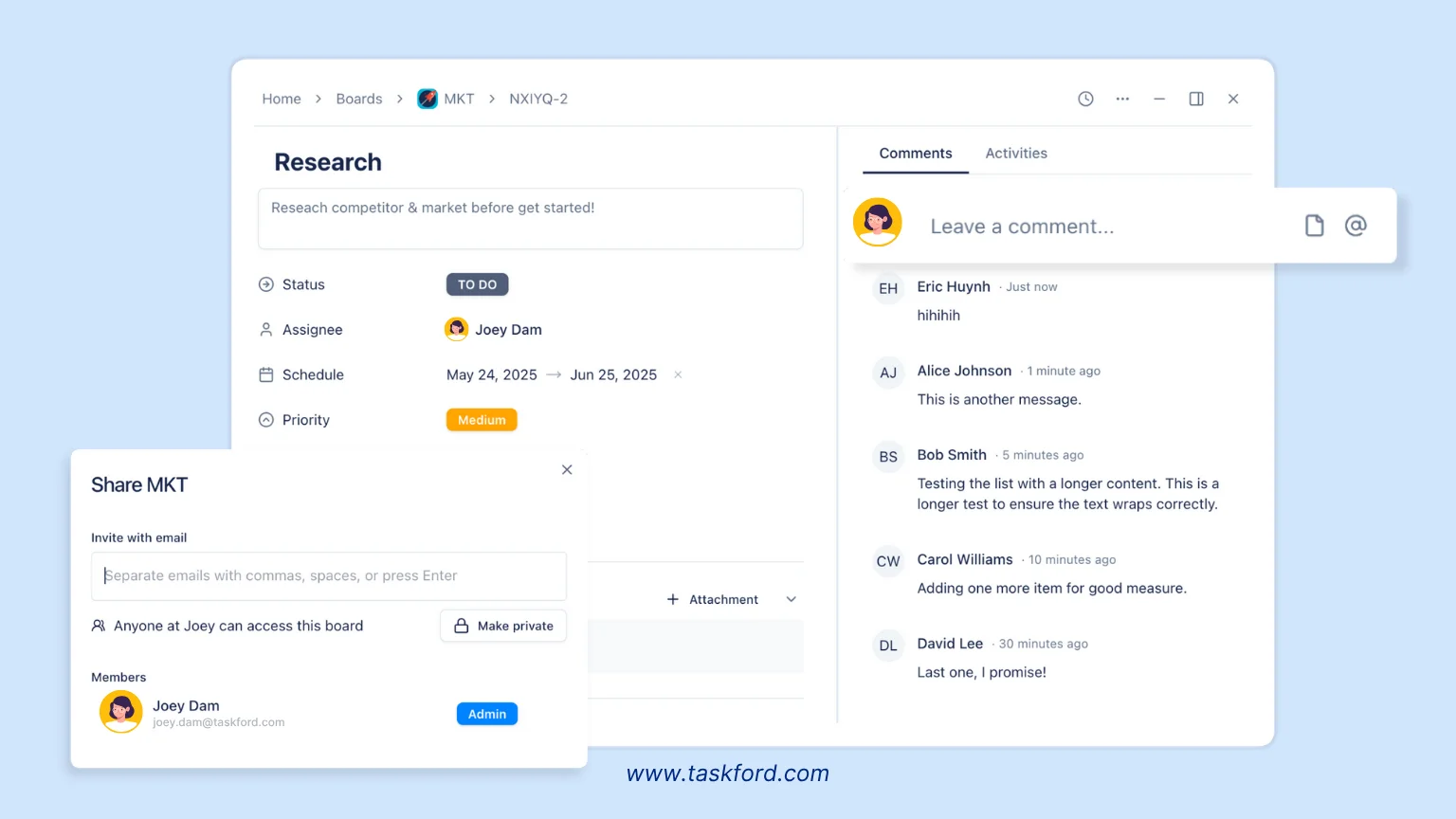Building a Strong Communication Plan: Key Steps for Project Success
Learn what a communication plan is and how it helps align stakeholders, deliver projects on time, and boost efficiency.
Clear communication is key to successful project management. Without it, projects risk delays, confusion, and missed opportunities. A Communication Plan helps you avoid these pitfalls by outlining how information will be shared, who will receive it, and when it’s needed.
In this article, we’ll break down what a communication plan is, why it’s essential for project success, and how to create one that keeps your project on track. We’ll also highlight its key elements, benefits, and provide practical tips for developing a communication plan tailored to your project’s needs.
What is a Communication Plan?
A Communication Plan is a strategic document that outlines how information will be shared during a project. It defines what will be communicated, who will receive the communication, how it will be delivered, and when it will be shared. The plan ensures that all project stakeholders are kept informed and aligned throughout the project lifecycle, preventing misunderstandings and ensuring smooth collaboration.

In essence, a communication plan acts as a roadmap for project communication, setting clear expectations about information flow, frequency of updates, and roles involved in the process. By establishing these guidelines, it helps keep everyone on the same page, enhancing transparency and supporting project success.
What Should a Communication Plan Include?
A well-rounded communication plan should include key components like stakeholder identification, communication objectives, methods and tools, frequency of updates, roles and responsibilities, feedback mechanisms, and escalation procedures. These elements ensure clear, organized, and effective communication throughout the project.
How a Communication Plan Drives Project Success
A well-implemented communication plan is crucial to project success for several reasons:
1. Stakeholder Alignment
A well-structured communication plan ensures that all stakeholders—internal and external—are aligned with the project's goals and milestones. By clearly defining the communication flow, it prevents misunderstandings and keeps everyone informed.
For example, in a construction project, effective project communication ensures that contractors, architects, and clients are aligned on deadlines, budget, and quality standards. This alignment is critical for avoiding conflicts and ensuring project success through communication.
2. Ensuring Timely Deliverables
A strong communication strategy for projects helps ensure on-time deliverables by providing regular updates, clear timelines, and escalation procedures. Miscommunication often causes delays and misunderstandings. By having a clear project communication plan, team members are aware of deadlines and dependencies, allowing them to address issues promptly.
For example, in software development, regular project updates ensure that all stakeholders understand progress and potential roadblocks, helping avoid project delays.
3. Improving Project Efficiency
A clear communication plan streamlines workflows and improves project efficiency. When team members understand expectations and have access to the right information, they can make better decisions and execute tasks more effectively.
In Agile projects, for instance, communication plans guide sprint reviews, retrospectives, and status updates to ensure alignment and keep everyone on track, increasing productivity and reducing confusion.
4. Fostering Team Collaboration
A communication plan fosters collaboration by establishing expectations for how team members should share progress, discuss issues, and make decisions. This encourages a transparent, cooperative environment.
For example, daily standups or weekly check-ins as part of a project communication plan help team members stay engaged, share progress, and address any challenges they may be facing. This leads to better teamwork, a clear sense of ownership, and a more efficient project flow.
Benefits of a Strong Communication Plan
The benefits of a strong communication plan extend beyond just preventing misunderstandings. Some of the key advantages include:
1. Minimizing Risk
A well-documented communication plan helps mitigate risks related to miscommunication, scope creep, and project misunderstandings. By setting clear communication channels and expectations from the outset, potential risks can be identified and addressed early, reducing the chance of major disruptions.
2. Building Trust with Stakeholders
Consistent communication is crucial for building trust with stakeholders. When communication is clear and regular, it leads to stronger long-term relationships and fewer project hurdles. Stakeholders feel more confident in the project's direction, which can result in better collaboration and support throughout the project.
3. Increasing Accountability
Clear communication of roles, expectations, and responsibilities ensures that everyone knows what is expected of them. This leads to higher accountability and a more streamlined workflow. When everyone is informed and aligned, they are more likely to take ownership of their tasks and contribute to the overall project success.
4. Keeping Everyone Informed
Timely and transparent communication ensures that all parties, from internal team members to external stakeholders, are kept in the loop. This promotes a sense of involvement and ensures that all project members can contribute effectively to achieving project goals.
Key Elements of a Communication Plan
A well-structured communication plan is crucial for ensuring clear and consistent communication throughout a project. Here are the key elements that should be included in any project communication plan:

1. Stakeholder Identification
Identify all the stakeholders involved in the project, both internal (team members, project managers) and external (clients, contractors, vendors). Knowing who needs to be communicated with ensures that the right messages reach the right people at the right time.
2. Communication Objectives
Clearly define the goals of the communication plan. What do you want to achieve through communication? Objectives might include keeping stakeholders informed about progress, managing expectations, addressing issues, or fostering collaboration among team members.
3. Methods and Tools
Specify the communication methods and tools that will be used. These might include emails, meetings, phone calls, instant messaging platforms, project management software, or technical communication platforms. Choose tools that best suit the communication needs of the project and the stakeholders involved.
4. Frequency and Timing
Establish how often communication will take place. For example, some stakeholders may need daily updates, while others might only require weekly or monthly reports. Defining communication frequency ensures that everyone receives information at the appropriate intervals without being overwhelmed.
5. Roles and Responsibilities
Assign clear roles and responsibilities for communication tasks. Determine who is responsible for sending updates, leading meetings, and communicating with specific stakeholders. This helps avoid confusion and ensures that communication flows smoothly.
How to Develop a Communication Plan for Your Project
Developing a communication plan for your project is crucial for ensuring that all stakeholders are aligned, informed, and engaged throughout the project lifecycle. Here's a step-by-step guide on how to create a communication plan:

Step 1: Identify Stakeholders
Start by identifying all the stakeholders involved in your project. This includes internal team members, clients, contractors, suppliers, and anyone else impacted by the project. Understanding who needs communication ensures that information reaches the right people at the right time.
Step 2: Define Communication Objectives
Clearly outline the goals of your communication efforts. Do you need to keep stakeholders informed of progress? Manage expectations? Address issues quickly? Setting communication objectives will help guide your approach and ensure you meet the specific needs of each stakeholder group.
Step 3: Select Communication Channels
Choosing the right communication channels ensures that information is shared most effectively and efficiently as possible. Each stakeholder group may prefer different methods of communication depending on the nature of the message, urgency, or their role in the project.
Here are some common communication channels to consider:
- Email for formal updates and reports.
- Meetings or video calls for detailed discussions or decision-making sessions.
- Project Management Tools like TaskFord, where teams can track milestones, project deliverables, and status updates in real-time, reducing the need for excessive emails or meetings. TaskFord offers easy tracking of tasks and deadlines, allowing for centralized communication that’s accessible to everyone involved.

- Instant Messaging (e.g., Slack) for quick updates or team collaboration on day-to-day activities.
- Intranet or document sharing platforms for archiving project documents and providing easy access to key files.
Step 4: Create a Schedule
A communication schedule outlines how often updates will be provided to stakeholders and sets expectations for the timing and format of those updates.
For example, will you provide daily stand-ups, weekly reports, or monthly status meetings? Defining communication intervals ensures that stakeholders are kept informed without overwhelming them with information.
Step 5: Monitor & Adjust
A good communication plan is not set in stone. It's essential to continuously monitor the effectiveness of the communication strategy and make adjustments as the project progresses.
By following these steps, you can create a communication plan tailored to your project’s specific needs, ensuring better alignment, smoother workflow, and more successful project outcomes.
Conclusion
A well-crafted communication plan is a cornerstone of project success. It ensures that all stakeholders are aligned, informed, and engaged throughout the project lifecycle. By identifying stakeholders, setting clear objectives, choosing appropriate communication channels, establishing a consistent schedule, and monitoring effectiveness, you can reduce the risk of misunderstandings and delays.
Effective communication goes beyond just sending information—it fosters transparency, promotes collaboration, and helps in managing expectations. With a solid plan in place, you can ensure that your project stays on track, meets deadlines, and achieves its goals, all while keeping your team and stakeholders connected and informed. A communication plan is not just a tool; it’s an essential strategy for driving project success.
You May Also Like:
- Client Management 101: Building Stronger Business Relationships.
- What is Project Management: The Ultimate Guide for Beginners.
- Project Management Terms: 80 Key Project Management Terminology You Should Know.
- Types of Risks in Project Management: Every Project Manager Should Know.
Making work simpler,
smarter, and more connected
Join our waitlist and be notified first.

Subscribe for Expert Tips
Unlock expert insights and stay ahead with TaskFord. Sign up now to receive valuable tips, strategies, and updates directly in your inbox.






